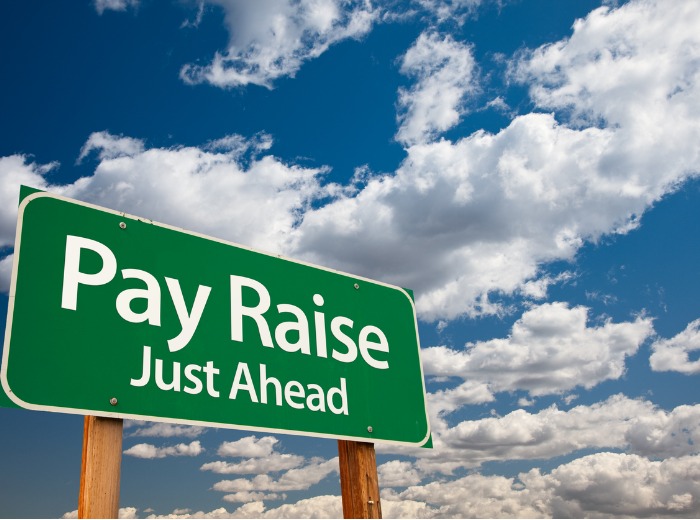The minimum wage is increasing: is your business ready?

28 February 2023

Did you know that since 2000, the minimum wage in New Zealand has risen substantially? About nine per cent of all Kiwi employees are paid according to the minimum wage however, these increases primarily affect teenager works between the ages of 16 and 18. In line with the annual increases over the past few years, the adult minimum wage is, again, due to rise this year on 1 April.
From 1 April 2023, the adult minimum wage will rise to $22.70 per hour which is an increase of $1.50 per hour from the current minimum wage set at $21.20.
This means it will be illegal for any employees who are entitled to the adult minimum wage to be paid less than $22.70 from 1 April. At the same time, the minimum wage for starting and training employees will also go up from $16.96 to $18.16 per hour.
In this article, I’ll share four important things employers need to think about to prepare their businesses for the upcoming wage increase.
1. Notify employees: send out variation letters to all affected staff
All employees earning the adult minimum wage of $21.20 per hour must be paid at a new rate, which is no less than $22.70 per hour, from 1 April 2023.
The same applies to those employees currently earning the starting-out or training wage rates.
You’ll need to notify your employees who earn minimum wage about this pay increase on Saturday 1 April 2023 with a written variation to their existing agreement. You can send this notification via email or letter.
2. Ready, set, payroll! Are your systems ready?
This may seem like an obvious question but it can be overlooked. So, have you checked in with your payroll manager or whoever manages your payroll system to ensure they’re ready for these changes?
Technology isn’t infallible – even automated payroll systems can make mistakes. And, if you’re still running off a paper-based or manual payroll process, then you must be 100 per cent confident that the wage calculations are correct from 1 April 2023.
3. Are your contracts and agreements up to date?
Sometimes, in the process of reviewing who’s on minimum wage, you uncover a contract or two that are no longer current – if this happens, don’t panic! It’s a great opportunity to get your record-keeping up to date – and remember that at least you found them, and not the Labour Inspectorate!
4. Managing employee pay relativity
The upcoming minimum wage increase only legally applies to the minimum rate of pay – there’s no requirement that every single employee receives a $1.50 per hour wage increase.
However, you may have some workers who are already earning $22.70 an hour ($1.50 more than the current minimum wage of $21.20). These employees will fall into the minimum pay rate bracket following the increase on 1 April. Despite there being no legal requirement to provide a pay rise here, this can raise issues about how more experienced employees are paid compared to less qualified or experienced workers.
For example, an employee already earning $22.70, who suddenly makes the same income as a less skilled colleague, may feel resentful or frustrated that your company isn’t recognising their seniority or capability. Employees in this situation may be keen to negotiate a pay increase to maintain the relative pay difference.
When figuring out a strategy to manage pay relativity, it’s essential to consider affordability and properly understand the workforce expectations, and how to manage them proactively.
Again, there’s no legal obligation to increase the pay rate for anyone earning at least $22.70 an hour already. But, with an eye on employee morale and workplace dynamics, you could consider the following if pay relativity comes up:
- Increasing an employee’s $22.70 an hour wage by $1.50 an hour (to maintain the relative difference between their salaries and the minimum wage).
- Increase an employee’s rate by an amount that keeps a differential rate and is reflective of individual ability and performance. You’d need to substantiate this increase through a performance review.
- If remuneration increases aren’t affordable for your business at this time, are there other non-cash benefits you can offer your more experienced workers, such as mentoring or training and development opportunities?
All minimum pay changes must appear in the next pay slip after 1 April 2023.
It’s possible to delay the increase; for example, if the administrative load makes it impossible to meet the deadline. But you’d still be required to backpay affected employees to 1 April as soon as possible. You should proactively communicate this to your staff if you find yourself in this situation.
As an employer, you’ll need to keep up to date with the latest minimum pay changes and pay all your employees at least the minimum wage. This year’s pay increases may introduce significantly greater wage costs to your business. In this case, you may also want to think about pricing strategies and budget forecasting to account for your higher wage and holiday pay obligations.
We believe HR should be simple. Simple enough for you to run your business confidently. enableHR has everything you need to manage the entire employee lifecycle from recruitment and onboarding to managing payroll information and awards. If you’d like to see enableHR in action, contact us to learn more about how we can help your business.




